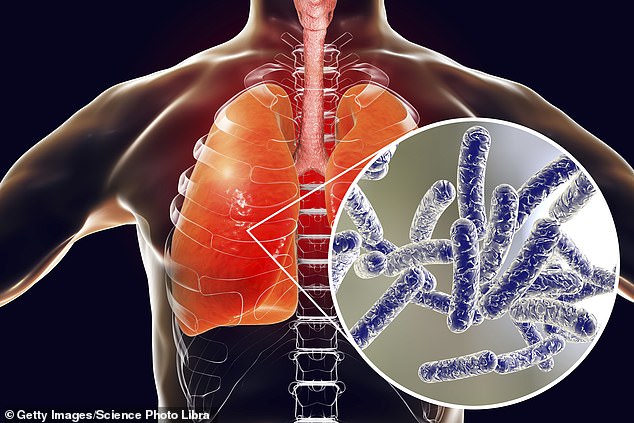A Connecticut man contracted a rare and deadly lung disease after smoking a cannabis pipe with water from a garden hose.
The unnamed patient, 25, who suffered a “crunch” to his lungs, sought medical help after four days of “vigorous” coughing, confusion, vomiting and back pain.
Urine tests revealed that the man had Legionnaires’ disease, a bacterial infection that causes lung damage and severe pneumonia.
The man, who was addicted to cannabis and alcohol, had also suffered from sepsis, an overreaction of the immune system that kills one American every 90 seconds.
His story, documented by doctors, comes shortly after the DEA announced it was downgrading marijuana to a Schedule III drug, classifying it as “less harmful” than previously thought.
An unnamed 25-year-old man in Connecticut contracted Legionnaires’ disease after inhaling fumes while using a cannabis pipe with water from a garden hose.

Legionnaires’ disease is a severe form of pneumonia caused by Legionella bacteria, which is found in freshwater environments, shower heads, hot tubs, hot water tanks, and large plumbing systems.
Legionnaires’ disease is a severe form of pneumonia caused by the Legionella bacteria, which is found in freshwater environments such as lakes and streams.
However, it can also grow in artificial water systems such as shower heads and faucets, hot tubs, decorative fountains, hot water tanks and heaters, and large plumbing systems that are not cleaned frequently enough, exposing them to bacteria.
According to the CDC, water containing Legionella can aerosolize or become droplets that people breathe. And although it is less common, people can also drink water that contains the bacteria, similar to the patient in the study.
Doctors noted that the man was delirious and uncooperative. He also suffered from elevated heart rate and high blood pressure, as well as elevated white blood cells.
Additionally, the patient suffered from emphysema, which damages the air sacs in the lungs called alveoli.
Doctors treating him believe he contracted legionnaires and sepsis from inhaling vapors while using a cannabis pipe with water from a garden hose.
The CDC reports that most people exposed to Legionella do not get sick; However, some groups are more at risk for disease than others.
The agency estimates that between 8,000 and 10,000 cases are reported each year in the United States, although the true number is probably higher, since many cases go undiagnosed. About 15 of every 100 people who become infected are expected to die.
The most vulnerable include people over 50, current or former smokers, people with chronic lung diseases such as chronic obstructive pulmonary disease (COPD) or emphysema, and people with underlying conditions such as diabetes or organ failure.
The patient was discharged after six days and underwent a course of antibiotics for two weeks.
The case was published in the American Journal of Respiratory and Critical Care Medicine.


